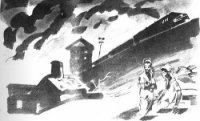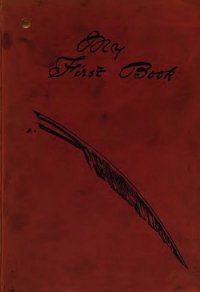Operation Nemesis: The Assassination Plot that Avenged the Armenian Genocide - Bogosian Eric (мир книг .txt) 📗
Armenians were participants in many of the early church councils in which Christian leaders from different regions and sects came together to hash out matters of doctrine. Of particular importance to the history of the Armenian Church was the Council of Chalcedon, convened in 451, at which a key point of theology was debated. The gist of the argument came down to whether God/Jesus possessed two “natures” (godly and human) or only one. This was an important theological question, because if Jesus was not a man, then obviously his suffering on the cross was mitigated by his supernatural powers. You can’t torture a god the way you can torture a human. The Armenians, distracted by their war with the Persians, were not represented at Chalcedon. Perhaps because they did not participate in deciding the issue, the Armenians did not agree with the outcome.
The Byzantine Christian establishment (and Rome) embraced the notion of Christ’s dual nature—humanness and godliness—through which his suffering absolved humanity of its original sin. The Armenians (and other “schismatic” churches), by contrast, opted for one nature. God was holy and that was that. That is why the Armenians are labeled “monophysite.”9 Theological resistance morphed into political resistance to the Byzantine hegemony. This position would now set the Armenians in contrast to their fellow Christians as well as the Islamic empire in which they lived.
For the next thousand years, the rising power of Islam would threaten the Christian world. When the Arabs invaded parts of Asia Minor in the second half of the first millennium, they decimated the Greek and Armenian communities settled there. If you visit Cappadocia today, you can tour a vast collection of manmade caves, in some places descending twenty stories underground, where temporary tunnel cities once housed thousands of Christians hiding from the Arab raiders. The Arab followers of Muhammad (570–632) had always thought of their military ventures as holy wars. During the first centuries of Islam, religion and warfare defined the new Islamic empire. The world was divided into two camps: the House of Islam (dar al-Islam) and the House of War (dar al-Harb). The House of Islam was congruent with the territorial empire of the Arabs (and the later caliphates, including the Ottomans). Everything beyond that border was considered a war zone.10
The Arab raiders would be followed by the Seljuk Turks in the eleventh century. Turkic tribes from the Central Asian region now called Kazakhstan (and farther east) swept into Persia and then Anatolia. Like the Mongols, the original Turks were highly mobile cavalrymen, agile masters of the composite bow and arrow (wood, horn, sinew, and glue). Turkic forces employed an early version of “shock and awe,” combining surprise with overwhelming force, often completely annihilating opposing armies. Like the Mongols, Turkic forces insisted on complete surrender. Often resistance was met with total destruction. And like the Arabs and the Mongols, the Turkic tribes were Muslim. The Seljuk Turks, a tribal dynasty, established a foothold in Anatolia by defeating the Christian Byzantines at Manzikert in 1071. They then proceeded to disrupt the Byzantine Empire by raiding and controlling the territory lying between the major population centers. As each city was cut off, it became helpless and could then be taken by siege.11
The Islamic Turkish invasion of Byzantium and the Holy Lands prompted the Byzantines to ask for assistance from the Christians of Europe proper. Crusader knights from France and other parts of Europe, blessed by the pope, invaded the eastern Mediterranean littoral in an attempt to wrest the birthplace of Jesus from “the Saracens.” The pope promised his holy legions that if they “took up the cross,” he would vacate sins and guarantee an afterlife. For the commoners of Europe, the Crusades were one way to escape the grinding misery of medieval existence. In this way the concept of the “holy warrior” or Crusader also became a fixture in Christian thinking. At first the knights were successful and managed to occupy Jerusalem. Fiefdoms were established up and down the coast, and the Knights Hospitaller, the Knights Templar, the Teutonic Knights, and others became a presence in the Middle East. Themselves at odds with the Byzantines, Armenians sided with the Crusaders (commonly known as “Franks”),12 who arrived on the scene at the dawn of the second millennium.
The fury with which the Crusader knights attacked the East was not always aimed at Muslims. By the Fourth Crusade in 1202, the knights, motivated by treasure and glory, had become a powerful political body in their own right. In this Crusade, they never got as far as the Holy Land but instead attacked Constantinople, where the Christian Byzantines, no longer on friendly terms with the Catholics, ruled. The Catholic French and Venetian knights ransacked the holy Byzantine city. “The Latin soldiery subjected the greatest city in Europe to an indescribable sack. For three days they murdered, raped, looted and destroyed on a scale which even the ancient Vandals and Goths would have found unbelievable.… The Greeks were convinced that even the Turks, had they taken the city, would not have been as cruel as the Latin Christians.”13
Ravaging Constantinople, the Christian capital of the Byzantine Empire, the Franks and their confederates murdered the priests and raped the nuns. The Library of Constantinople was destroyed. Antiquities were looted. Much of the city was torched. Inside the magnificent Hagia Sophia, at the time the greatest church in Orthodox Christendom, the invaders smashed icons, tore holy books to shreds, and desecrated the altar while guzzling sacred wine from holy chalices. The rampage was followed by a massacre of the population. Islamic historians would later cite the actions of the Crusaders (as well as the Catholic conquistadors in the Americas) as evidence that Christians were as bloody as any Muslim army.
By 1200, the Seljuk Turks had solidly installed themselves in Asia Minor. In the thirteenth century, the even fiercer Mongols burst onto the scene and destroyed what the Seljuks had established. Some hundred years later, the Mongols relinquished their hold on Anatolia and various resilient Turkish ghazi emirates reestablished themselves, again moving westward and crowding the weakened Byzantines. One tribe in particular flourished. It was founded by a man named Osman (1258–1326). In time his descendants, the Osmanlis, controlled all of Anatolia to the east and as far as the Balkans to the west. Europeans called the Osmanlis “Ottomans.”
Then, around 1400, in a final Turco-Mongol thrust into the region, Tamurlane (or Timur) invaded Armenia and Georgia. Over the next two years he retook all of Anatolia and defeated the Ottoman sultan Bayezid in the Battle of Ankara. Tamurlane continued onward to Smyrna and ousted the Knights Hospitallers, remnants of the surviving Crusader forces. Tamurlane’s stay in the Ottoman lands was brief, but the damage done to the region, especially to the Armenians, was deep and permanent.
The Ottomans reconstituted themselves and expanded their Islamic empire in all directions. As the Ottoman Empire grew and flourished, it spread into territories all around Constantinople but could not take the imperial city itself. In 1453, after two years of preparation, Sultan Mehmed “the Conqueror” attacked the Christian city. The massive walls were hammered with artillery for weeks on end, only to be repaired as fast as they crumbled. In one of the most famous battles in history, Mehmed ordered Turkish warships physically lifted out of the water, carried overland, and dropped into the harbor on the other side of the Golden Horn. He then attacked from two sides at once and succeeded in taking the city, ending a thousand years of Christian rule. Sultan Mehmed repopulated the city by inviting, and sometimes forcing, people to move there. This included Christians and Jews.




